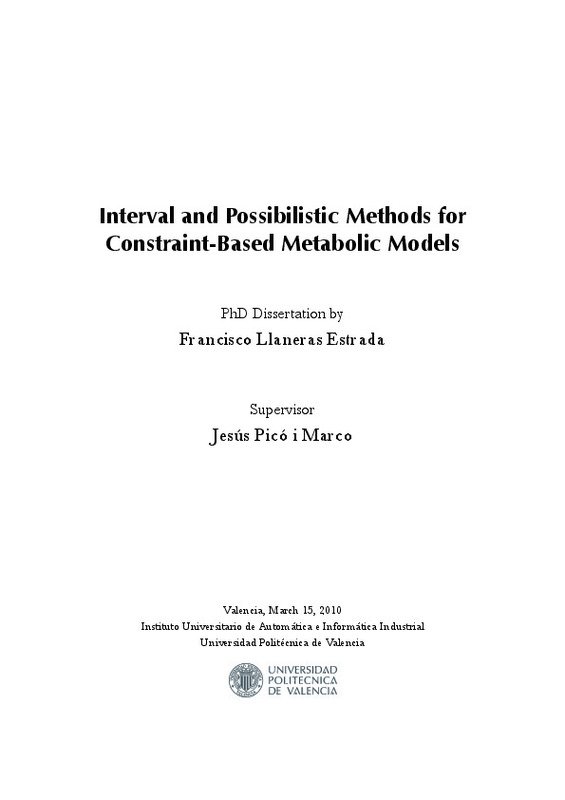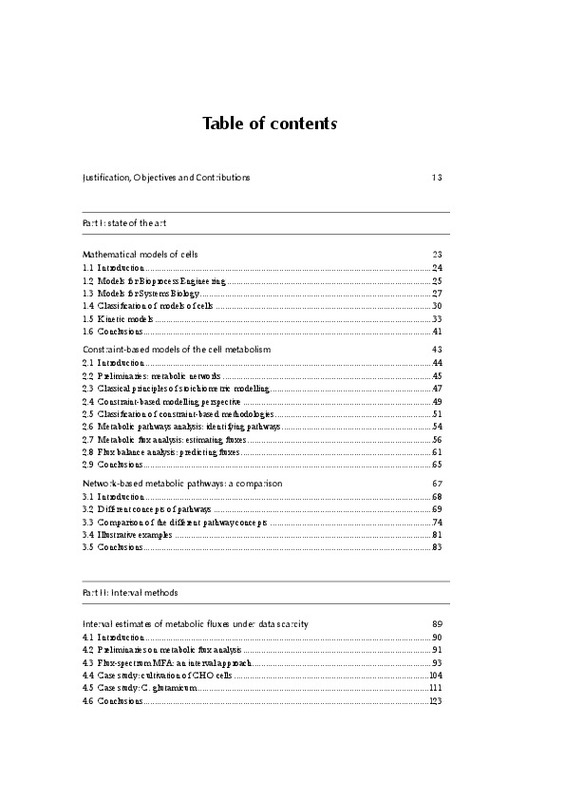- RiuNet repositorio UPV
- :
- Investigación
- :
- Tesis doctorales
- :
- Ver ítem
JavaScript is disabled for your browser. Some features of this site may not work without it.
Buscar en RiuNet
Listar
Mi cuenta
Estadísticas
Ayuda RiuNet
Admin. UPV
Interval and Possibilistic Methods for Constraint-Based Metabolic Models
Mostrar el registro completo del ítem
Llaneras Estrada, F. (2011). Interval and Possibilistic Methods for Constraint-Based Metabolic Models [Tesis doctoral]. Universitat Politècnica de València. https://doi.org/10.4995/Thesis/10251/10528
Por favor, use este identificador para citar o enlazar este ítem: http://hdl.handle.net/10251/10528
Ficheros en el ítem
Metadatos del ítem
| Título: | Interval and Possibilistic Methods for Constraint-Based Metabolic Models | |||
| Autor: | Llaneras Estrada, Francisco | |||
| Director(es): | ||||
| Entidad UPV: |
|
|||
| Fecha acto/lectura: |
|
|||
| Resumen: |
This thesis is devoted to the study and application of constraint-based metabolic models. The objective was to find simple ways to handle the difficulties that arise in practice due to uncertainty (knowledge is incomplete, ...[+]
|
|||
| Palabras clave: |
|
|||
| Derechos de uso: | Reserva de todos los derechos | |||
| DOI: |
|
|||
| Editorial: |
|
|||
| Tipo: |
|
recommendations
Este ítem aparece en la(s) siguiente(s) colección(ones)
-
Tesis doctorales [5389]







![Text file [Text]](/themes/UPV/images/text.png)



